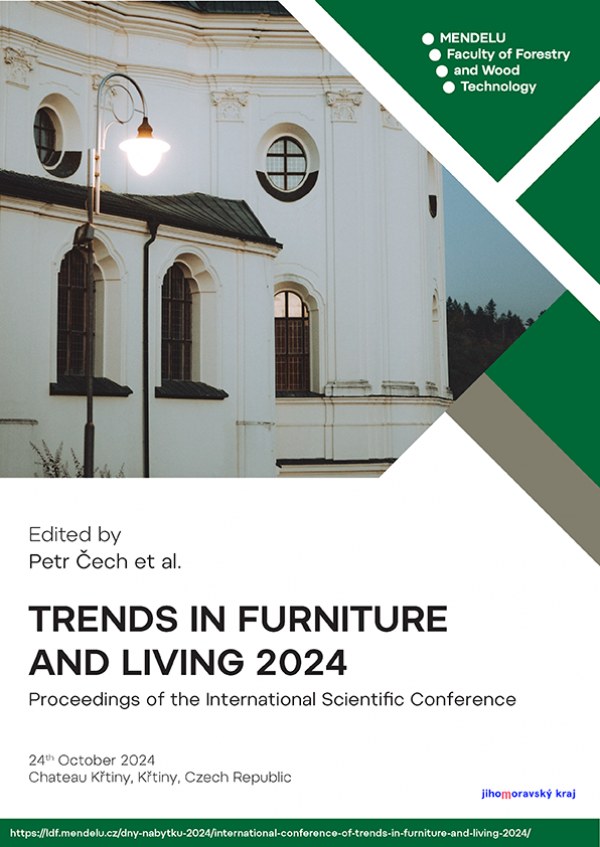
DOI: 10.11118/978-80-7701-044-3-0035
POTENTIAL NEW WOOD SPECIES FOR THE FURNITURE INDUSTRY
- Németh Róbert1, Fehér Sándor1, Ábrahám József1, Komán Szabolcs1, Csordós Diána1, Szeles Péter1, Báder Mátyás1
- 1 Faculty of Wood Engineering and Creative Industries, University of Sopron, Bajcsy-Zs. 4, 9400 Sopron, Hungary
The effects of climate change, which are becoming more pronounced today, mean that unconventional wood species must be used in the wood industry, of which the furniture industry is an important integral part. Less used wood species for furniture are poplar and robinia. Poplar is unsuitable as a surface component because of its low density, hardness, etc. This can be improved by compression, which would significantly increase the usability of this species, which is found in large quantities worldwide. The Brinell-Mörath surface hardness can be improved up to 22 MPa. Robinia already has interior, furniture and outdoor furniture applications, but its difficult machinability and variable colouration, especially in the case of so-called „black stripe“ discolouration, are major limiting factors. The latter can be improved by various thermal treatments. For this purpose, dry thermal-treatment was considered to be a better solution than steaming in water vapour.
Klíčová slova: black stripe, colour, cielab, hardness, thermal treatment, steaming
stránky: 35-40, online: 2025
Reference
- MILITZ, H. 2002. Thermal treatment of wood: European processes and their background. IRG/WP 02-40241. International Research Group on Wood Preservation. https://www.irg-wp.com/irgdocs/details.php?f6f6ffad-b3c3-433d-aaaa-647a154fd4c7
- ESTEVES, B.; VELEZ MARQUES, A.; DOMINGOS, I.; PEREIRA, H. 2008. Heat-induced colour changes of pine (Pinus pinaster) and eucalypt (Eucalyptus globulus) wood. Wood Science and Technology. 42(5), 369-384. https://doi.org/10.1007/s00226-007-0157-2
 Přejít k původnímu zdroji...
Přejít k původnímu zdroji... - NÉMETH, R.; MOLNÁR, S.; TOLVAJ, L.; ÁBRAHÁM, J. 2004. Physical and mechanical properties of steamed beech wood (with and without red heart). In: COST E44 "Wood Processing Strategy" Training course "Beech wood: From forestry to end products". Göttingen, Németország.
- MOKRZYCKI, W. S.; TATOL, M. 2011. Color difference ΔE: A survey. Machine Graphics and Vision. 20(4), 383-411.


